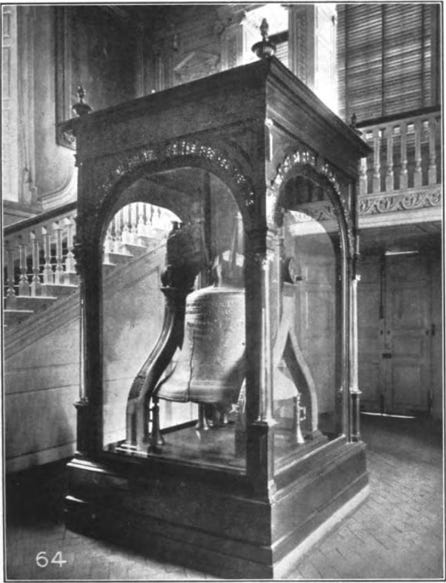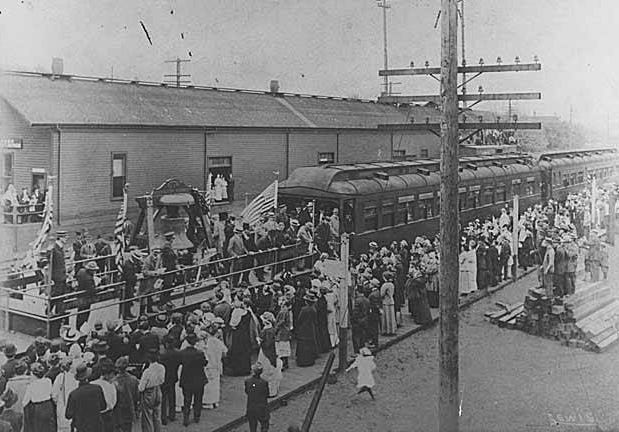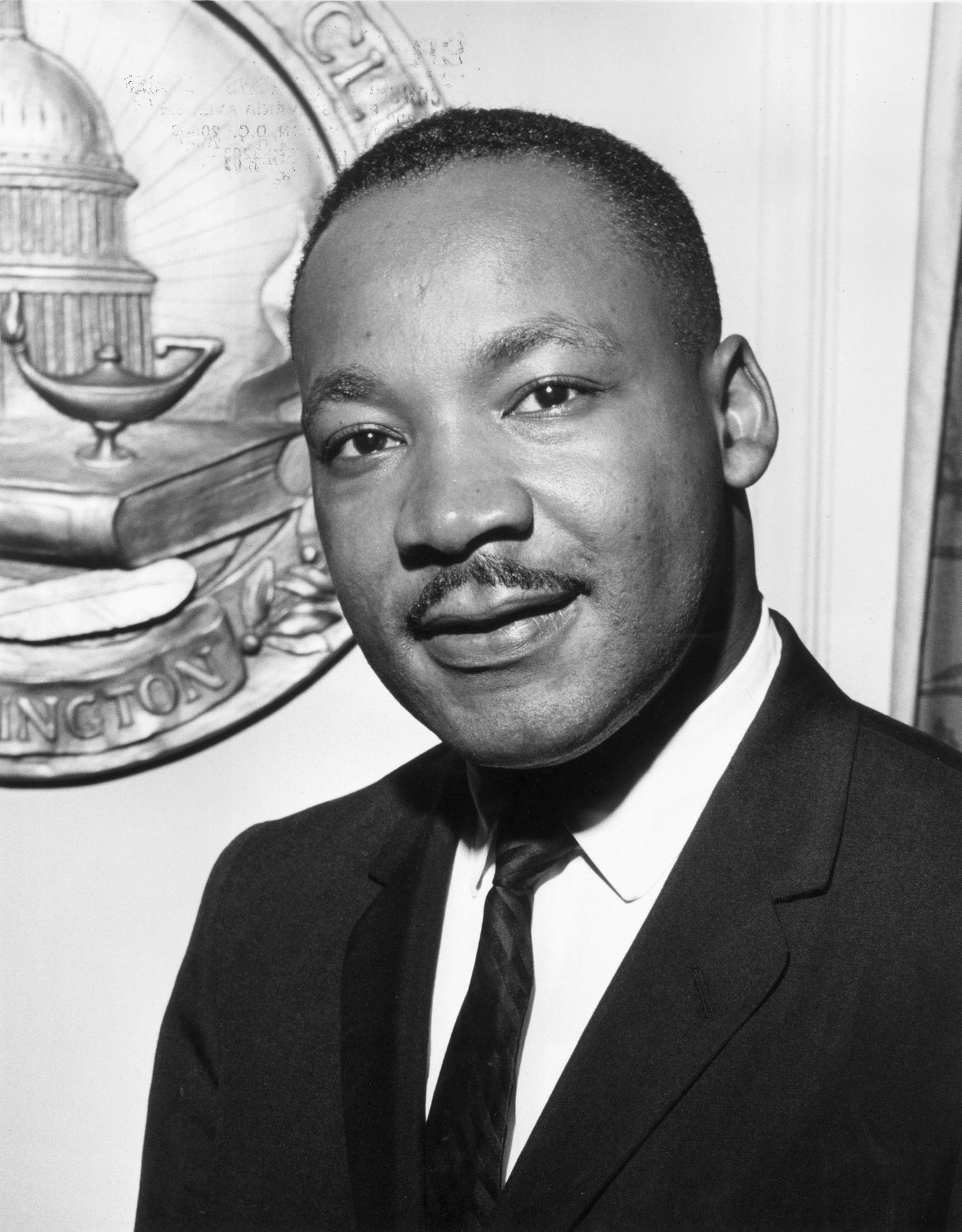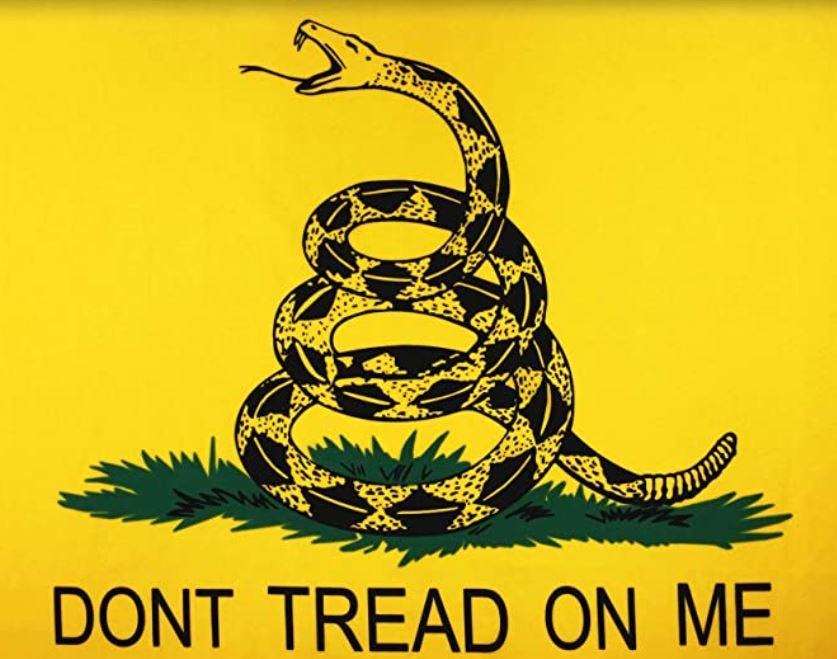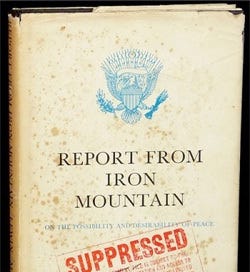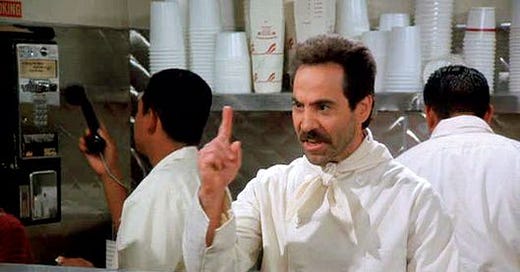

Discover more from Frederick R. Smith Speaks
The Liberty Bell
... proclaim liberty throughout all the land unto all the inhabitants thereof: it shall be a jubile unto you; and ye shall return every man unto his possession...
A moral earthquake had awakened the slumber of ages. The spirit-stirring notes that pealed out from Independence Hall, proclaiming “LIBERTY THROUGHOUT THE LAND TO ALL THE INHABITANTS THEREOF,” and causing the most humble to lift up his head with higher hopes and nobler aspirations, were yet echoing through every nook and corner of the land. The revolutionary struggle, in which was involved the great principles of human rights, was still fresh in the minds of all from the least unto the greatest.
William Douglass abolitionist (1804–1862)
In 1701, William Penn, a devout Christian Quaker, wrote the Charter of Privileges to the colonists of Pennsylvania. On November 1, 1751, colonists sent a letter to Robert Charles, the Colonial Agent of the Province of Pennsylvania who was working in London. Signed by Isaac Norris, Thomas Leech, and Edward Warner, it represented the desires of the Assembly to purchase a bell for the State House (now Independence Hall) steeple. Whitechapel Foundry in London manufactured the Bell.
Isaac Norris, the Speaker of the Assembly, also a Quaker, chose text from the Old Testament. It was a portion of Leviticus 25:10 inscribed on the Bell: Proclaim Liberty Throughout All the Land Unto All the Inhabitants thereof. On September 1, 1752, the Bell arrived in Philadelphia and hung on March 10, 1753. Isaac Norris wrote:
“I had the mortification to hear that it was cracked by a stroke of the clapper without any other viollence [sic] as it was hung up to try the sound.”
Too high of metal hardness or flaws in its casting caused the break. John Pass and John Stow (Philadelphia foundry workers) melted down and recast the Bell. They added 1.5 ounces of copper per pound to make the new casting less brittle. They charged slightly over 36 Pounds for their labor and the new Bell. Raised on March 29, 1753, there was too much copper, and few were pleased with the tone of the Bell. As a result, Pass and Stow broke up the Bell and recast it again. Raised on June 11, 1753, it too rang poorly. In November, Norris wrote to Robert Charles saying he was still displeased. He requested Whitechapel cast a new Bell.
Upon the arrival of the new Bell from England, colonists found it sounded no better than the Pass and Stow casting. This second Whitechapel bell was placed in the dome of the State House roof and attached to the clock to sound the hours.
From this perch, the Bell rang to proclaim American Independence. The Bell also rang out for the requiem of founding heroes such as Thomas Jefferson and John Adams and other noteworthy events of our Nation’s early life. According to tradition, it slightly cracked in 1835 while sounding the requiem for Chief Justice John Marshall. A more accurate account of history shows that the foot-long hairline crack most likely occurred on Washington’s Birthday (February 22) in 1835. The famous final expansion of the damage, which rendered the Bell useless, occurred on the anniversary of Washington’s Birthday in 1846. Some coincidence!
The Bell was lowered to the ground directly below the steeple in 1873 and placed on a supporting base. A forgotten but crucial historical event occurred at this time: the entire biblical verse was inscribed on the base. The entire verse from Leviticus 25:10 (King James Version) reads as follows:
And ye shall hallow the fiftieth year, and proclaim liberty throughout all the land unto all the inhabitants thereof: it shall be a jubile unto you; and ye shall return every man unto his possession, and ye shall return every man unto his family.
Presented in the book “The Rewriting of America’s History,” the “Committee on the Restoration of Independence Hall, Mayor’s Office” on June 12, 1873, recounts the repositioning of the Bell:
The Old “Liberty Bell,” which had been taken from the cupola and placed within the chamber, we removed to the vestibule, suspending it from the original beam and scaffolding. (The latter having been discovered nearly intact in the steeple.) We deemed it appropriate to inscribe upon its base the whole Scriptural text, a part of which had been molded upon the Bell in 1753, as it even then, so essentially predicted and ordained: first, “Liberty throughout the land,” and secondly the CENTENNIAL celebration thereof. The whole has been enclosed by a plain railing, which circumstances show to be essential to its preservation.
Catherine Millard’s book “The Rewriting of America’s History” (Horizon House Publishers, 1991) is an exhaustive account of the organized program to eliminate the Christian elements from our past. The Liberty Bell is one of many examples of this sinister effort.
One of the first significant events during the Bicentennial Celebration of the Nation in 1976 was to move the Liberty Bell. Not only was it moved from its respectful spot in Independence Hall, but detached from the base containing the full Biblical inscription of Leviticus 25:10. It ended up in a pavilion in the park across the street. In 2003, the “Liberty Bell Center” opened. It is an ugly ultra-modern structure at the other end of the park across the street from Independence Hall.
Of personal interest, Your Author’s Father, in the mid 1960s, performed the electrical construction of the outdoor lamp posts and associated wiring at the park perimeter across the road from Independence Hall. There are fond memories of the elegant traditional street lamps installed by my dad’s electrical business. Today, bland modern appliances stand in place of my father’s work. Dad got his start as an electrician during his service in the US Navy during World War II while seeing action in the South Pacific Theatre. See Frederick R. Smith Speaks, USS Belleau Wood I CV-24.
In her book, Catherine Miller Miller provides us with the text of a conversation she had with a National Park Service ranger on December 8, 1986. Here is this salient example of how our history morphs to suit the modern thought process:
The Liberty Bell basically just started to wear out in the 1830s after 80 years of use, and it wasn’t really that great Bell to begin with, so they really didn’t notice that it didn’t sound too good for a while….If it hadn’t been called the “Liberty Bell” by the abolitionists, it would have probably been just used as scrap metal, and just been thrown out. It was just an ordinary bell that rang up to the 1840’s and there was no significance. The significance developed after the American Civil War because the Nation really needed to be healed after the Civil War, because the North and the South really weren’t on speaking terms. And the Bell became this big romantic symbol of liberty for everybody and brotherhood; and by World War I it had expanded not just for liberty in the United States, but liberty to people all over the world. It was only at the time of the Civil War that this Bell got its significance. In the 1850s, say 1830s it started to become significant to the Abolitionists. In the 1850’s it expanded, and after the Civil War it became this big romantic symbol that it is today.
To imply the Liberty Bell was insignificant up to the time of the abolitionist movement is a false statement. As demonstrated by the historical facts, the Liberty Bell always had a special place in the heart of people.
Authorities moved the Bell for safekeeping during the 1777 battles for independence near Philadelphia. Starting in the 1880s, it traveled to cities throughout the land to “proclaim liberty.” In 1915, it made a journey by railroad to the Panama-Pacific Exposition in San Francisco.
Except as noted above, the Bell was at Independence Hall for the first 200 years of our Nation.
Let freedom ring from the prodigious hilltops of New Hampshire. Let freedom ring from the mighty mountains of New York. Let freedom ring from the heightening Alleghenies of Pennsylvania! Let freedom ring from the snowcapped Rockies of Colorado! Let freedom ring from the curvaceous slopes of California! But not only that; let freedom ring from Stone Mountain of Georgia! Let freedom ring from Lookout Mountain of Tennessee! Let freedom ring from every hill and every molehill of Mississippi. From every mountainside, let freedom ring. And when this happens, when we let freedom ring, when we let it ring from every village and every hamlet, from every state and every city, we will be able to speed up that day when all of God’s children, black men and white men, Jews and Gentiles, Protestants and Catholics, will be able to join hands and sing in the words of the old negro spiritual, “Free at last! Free at last! Thank God Almighty, we are free at last!”
Cogent author and publisher, Frederick R. Smith





